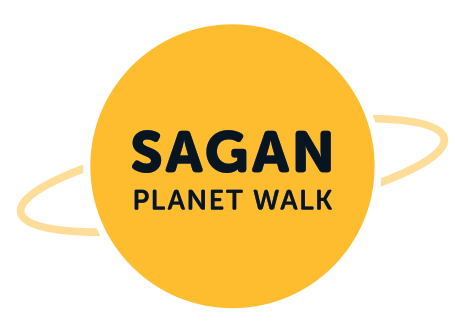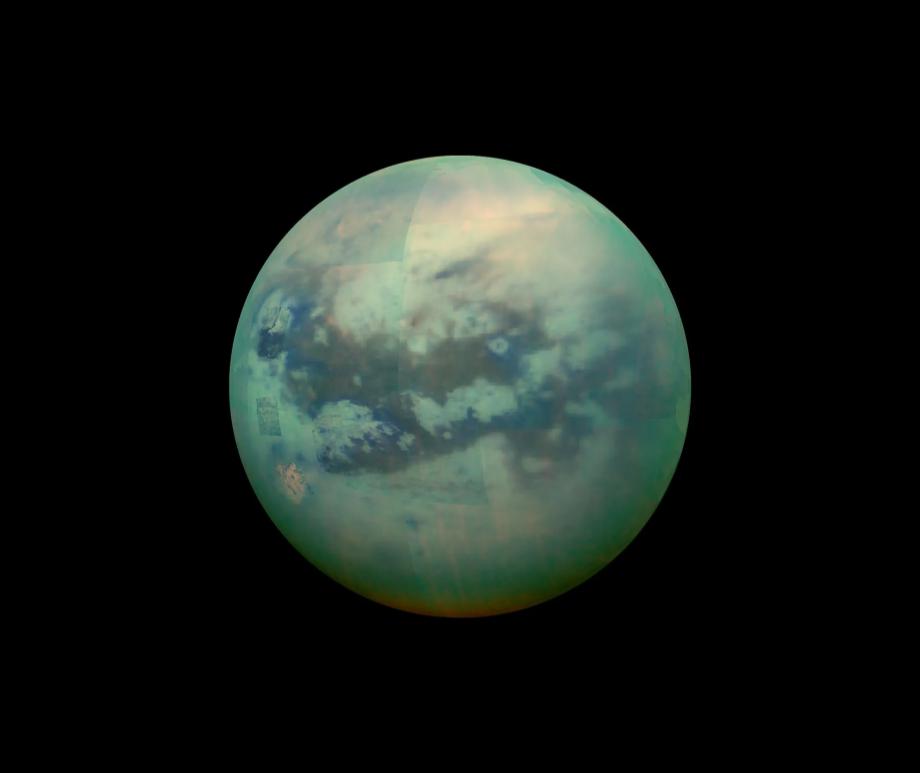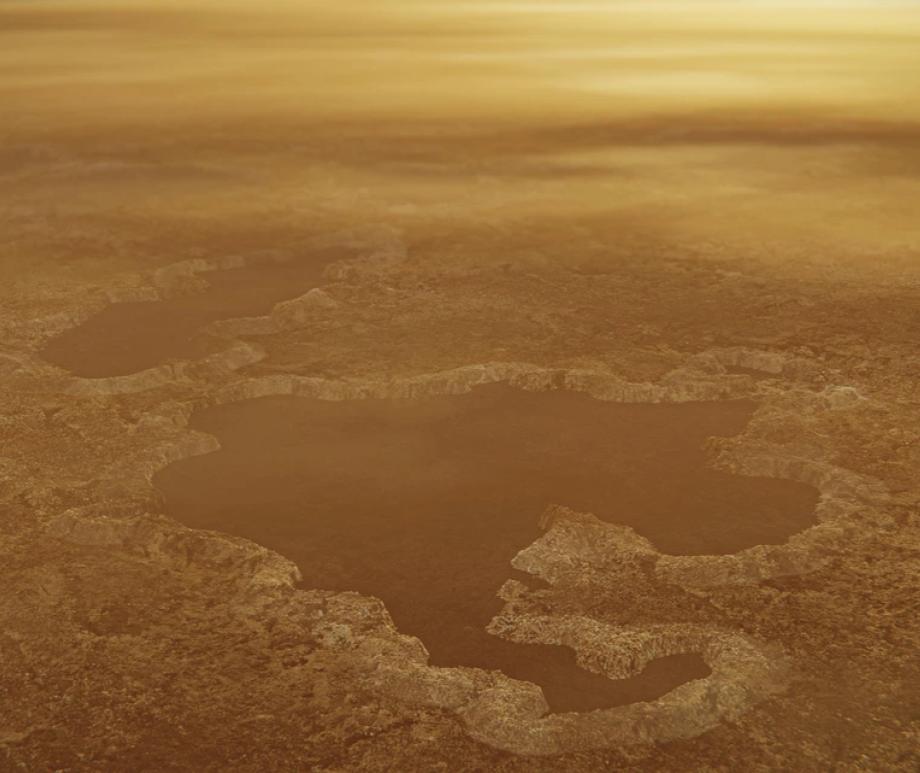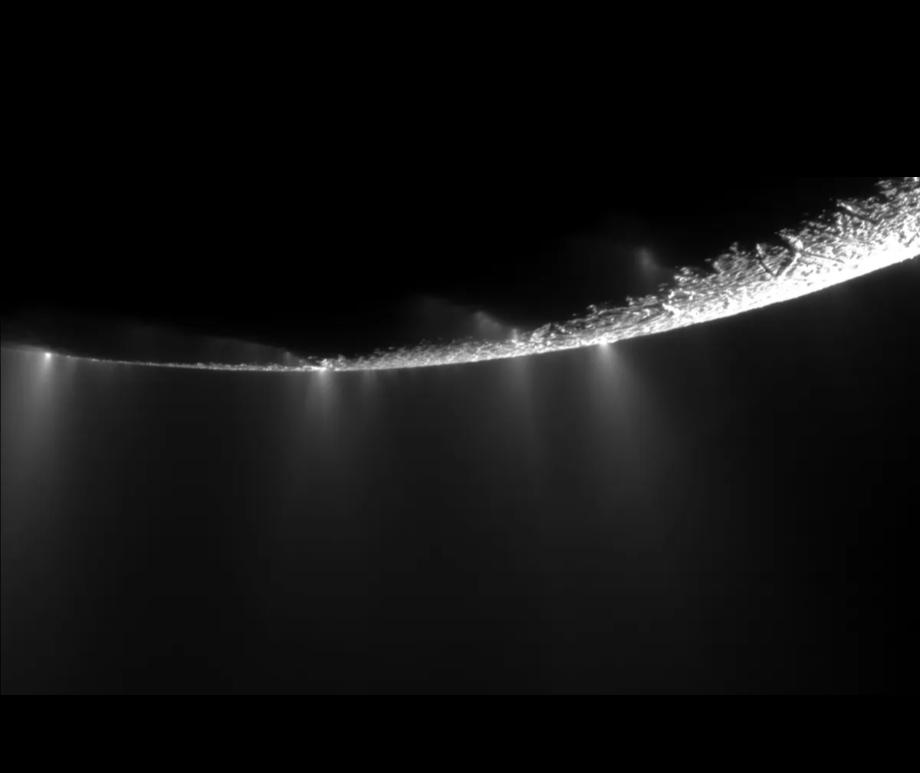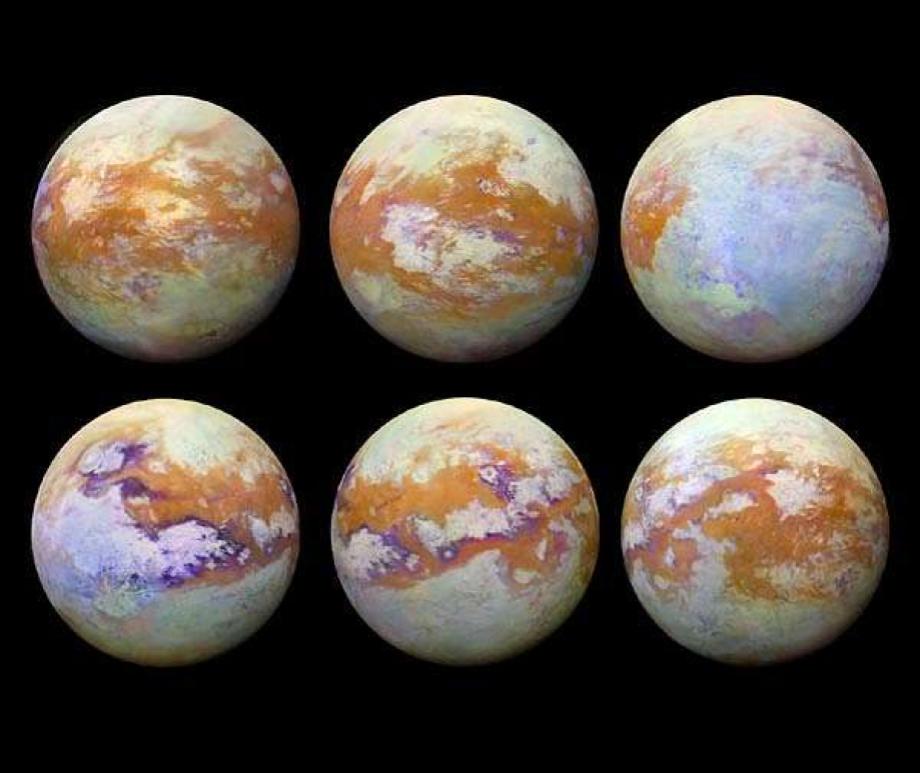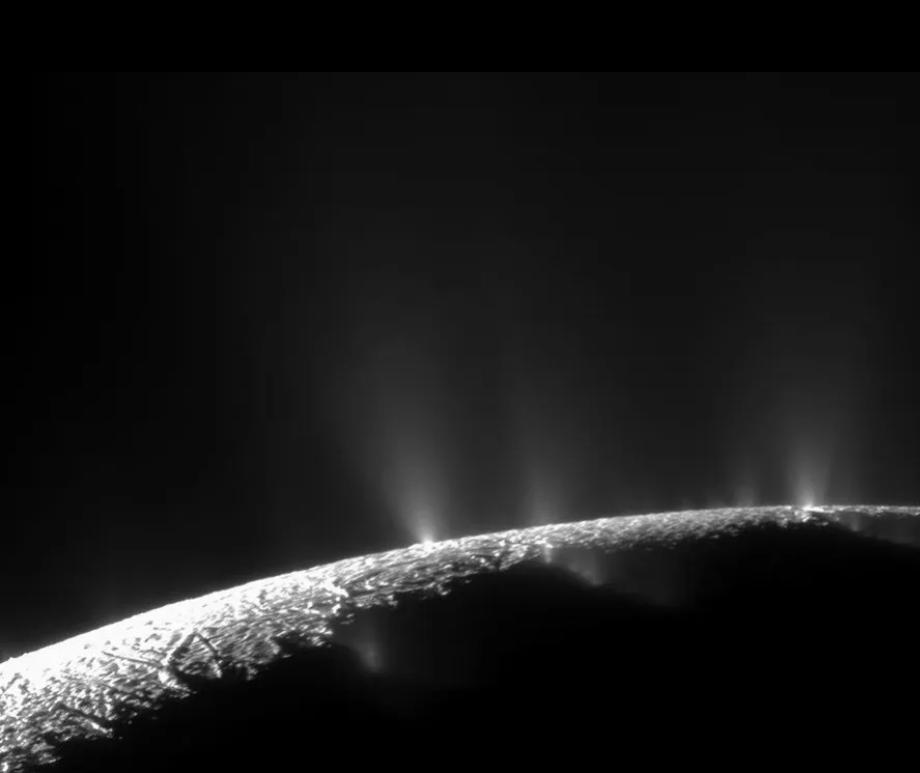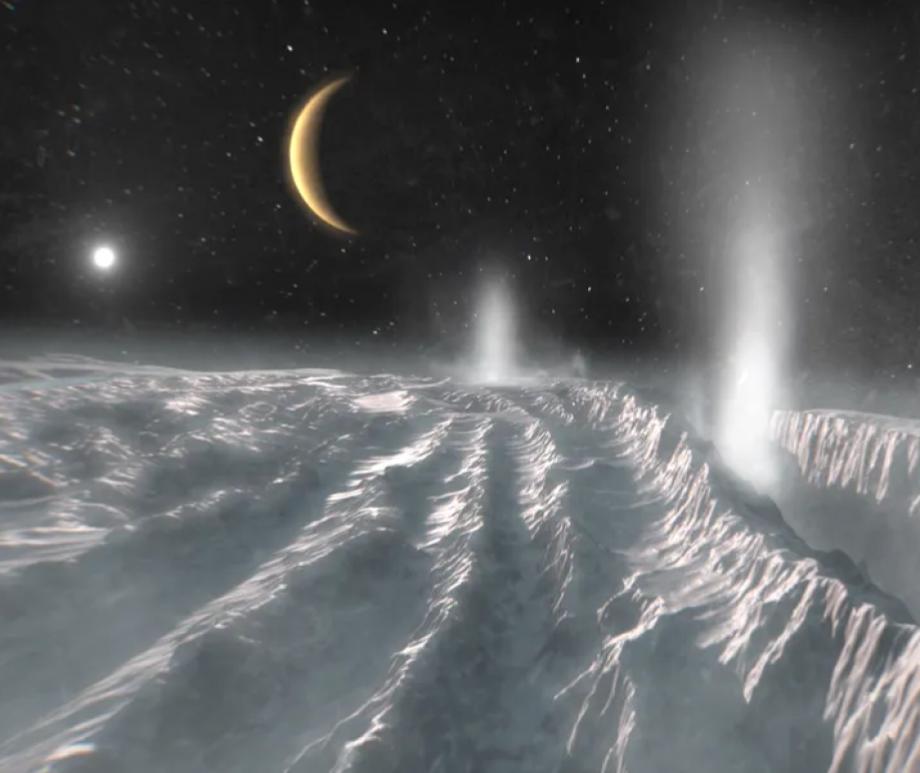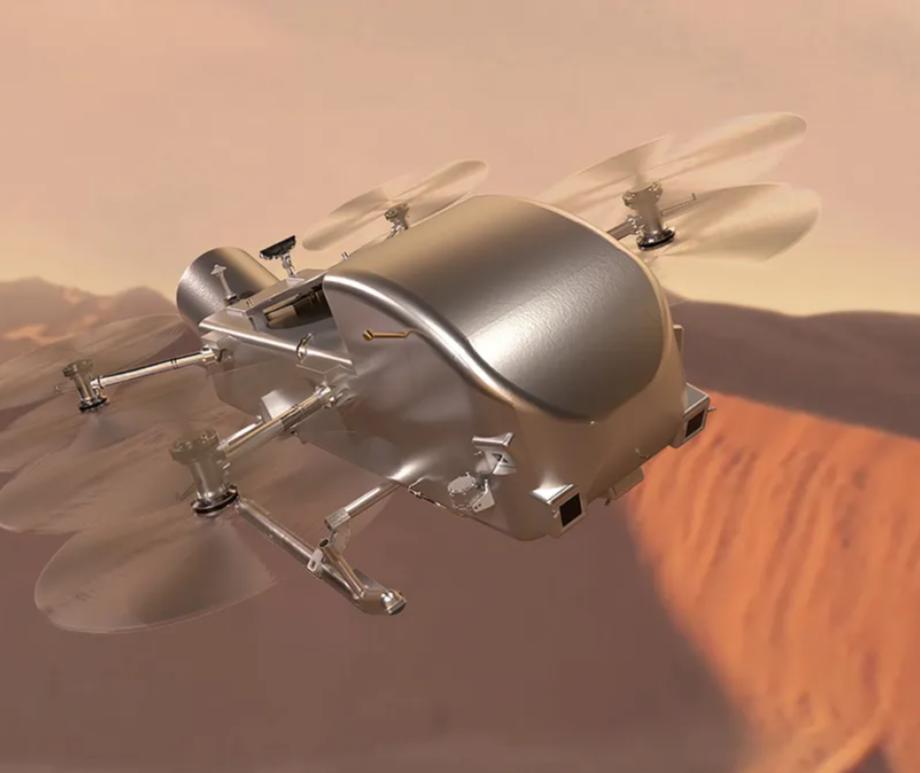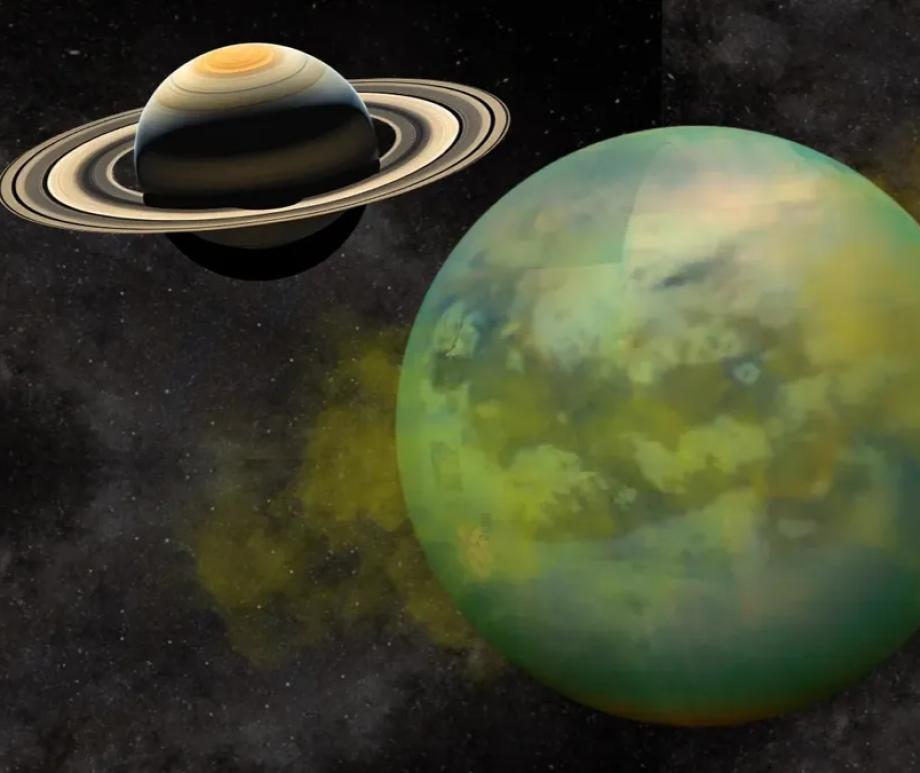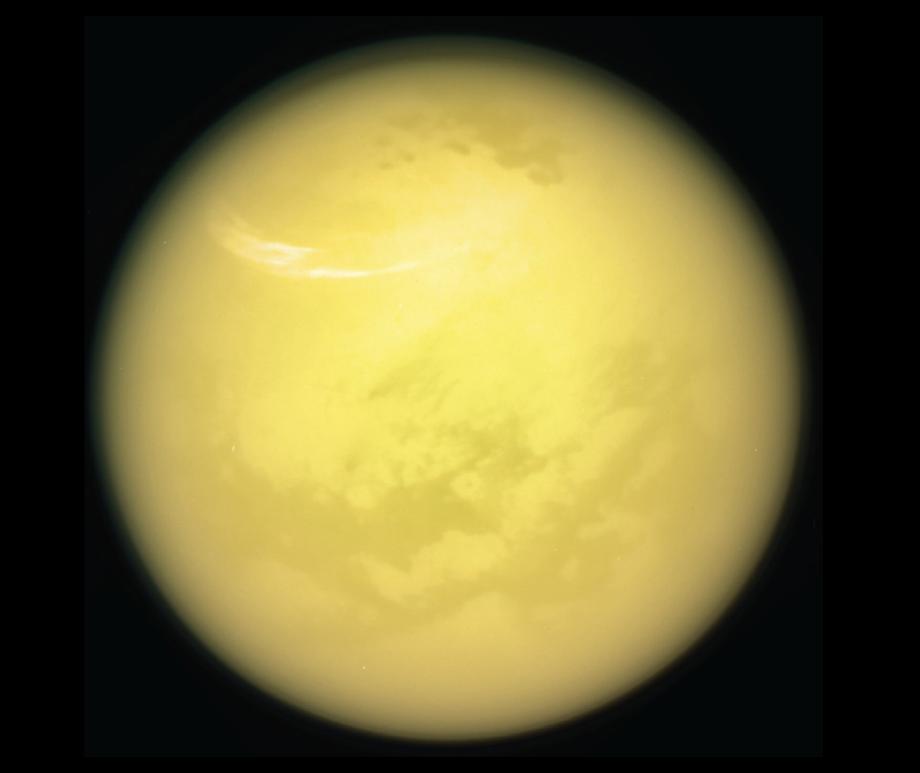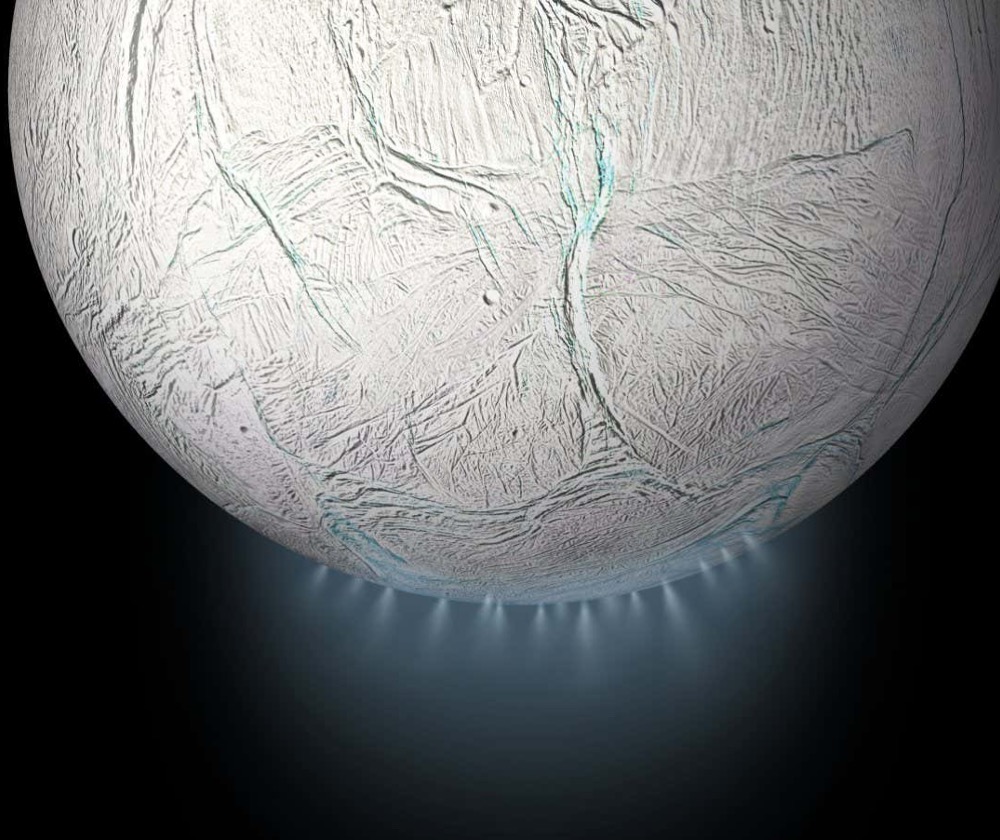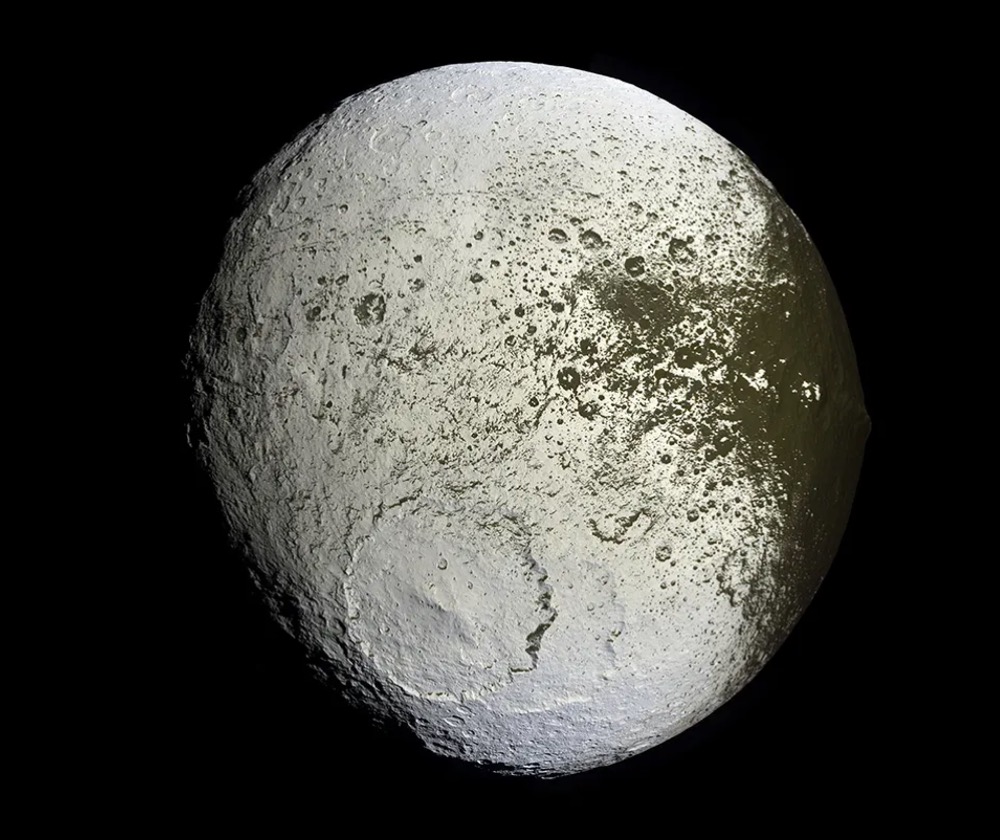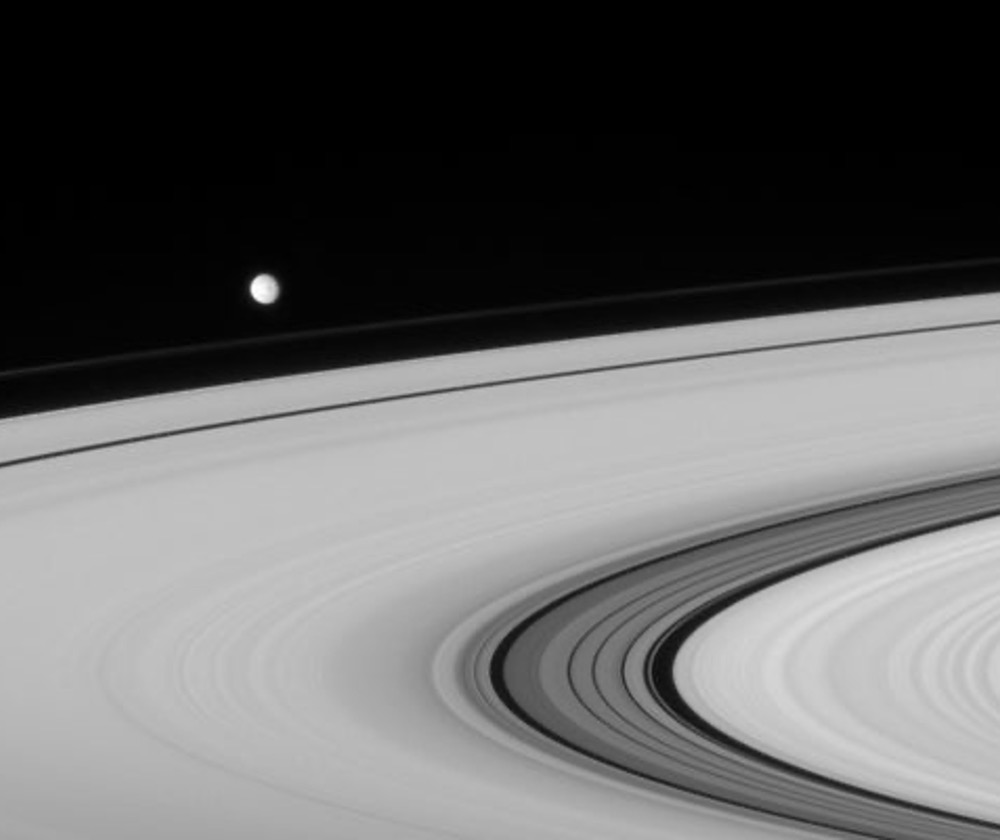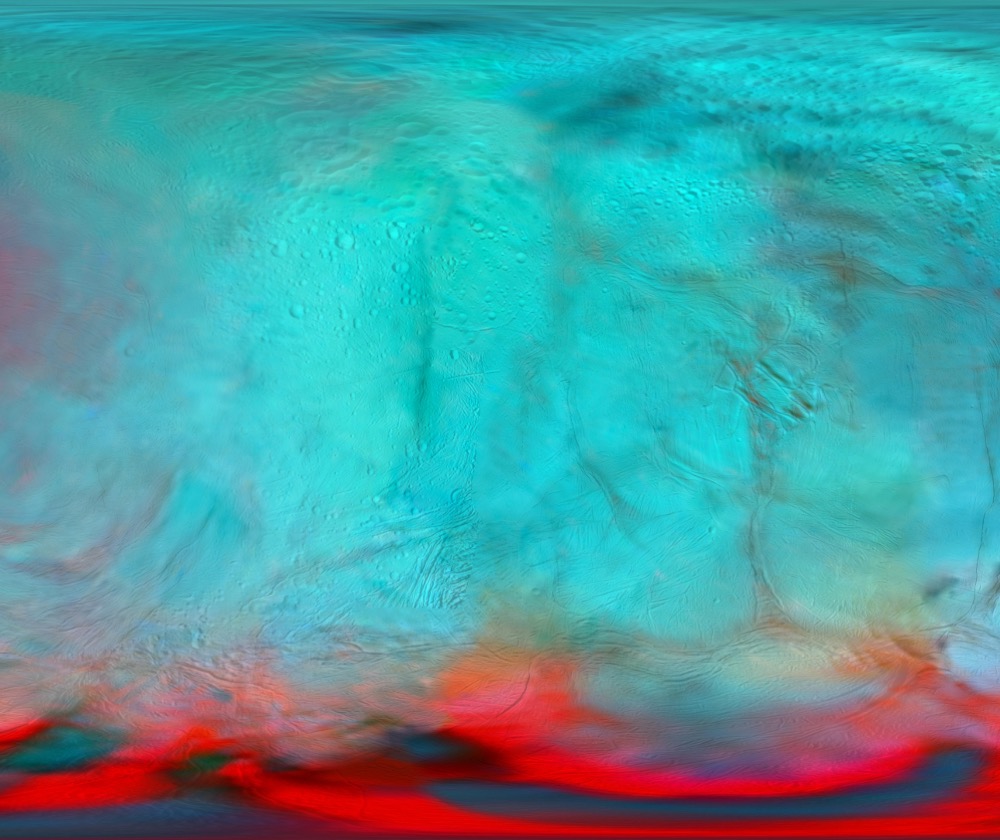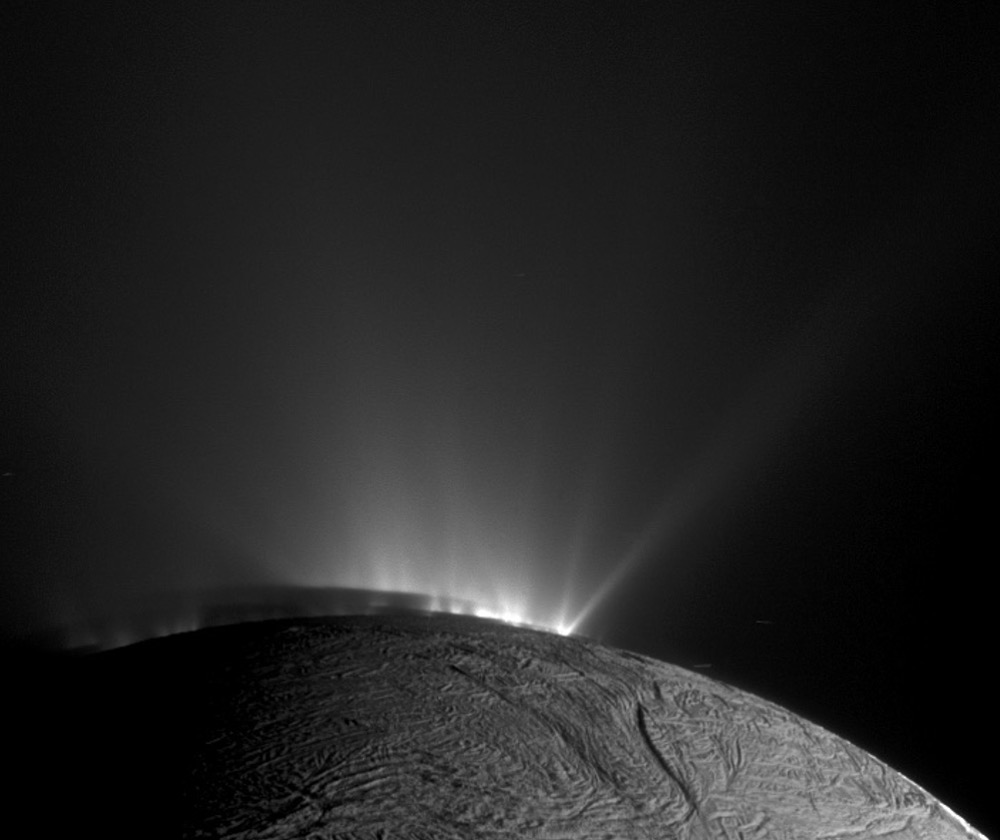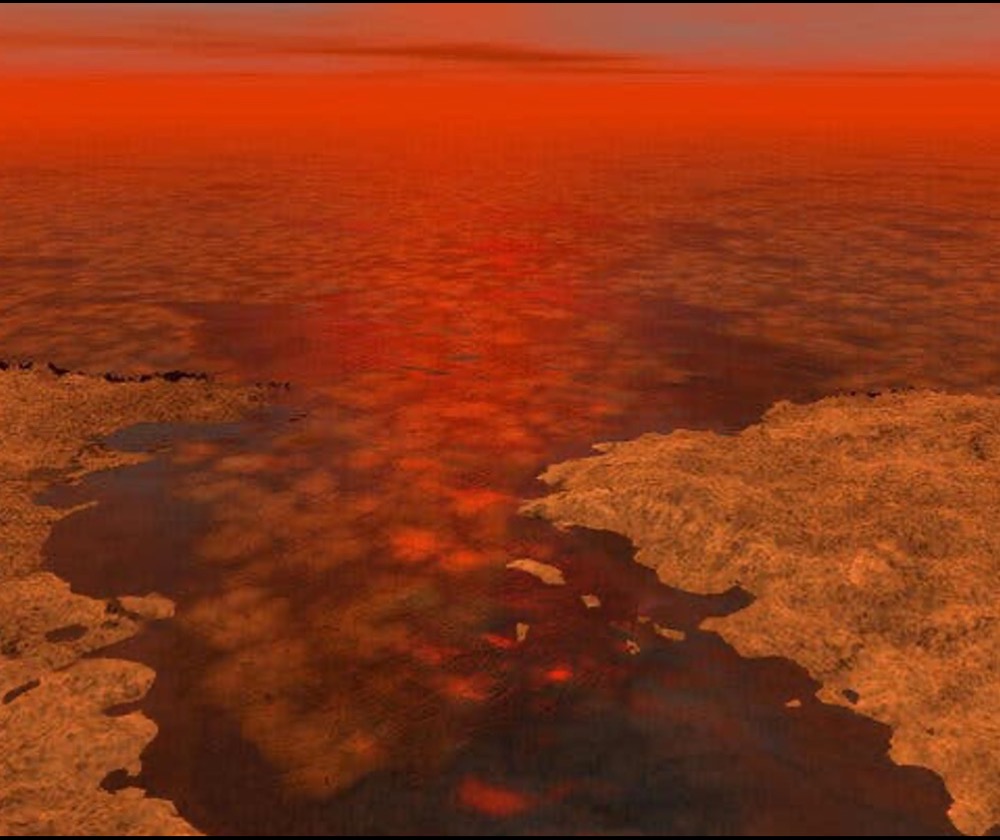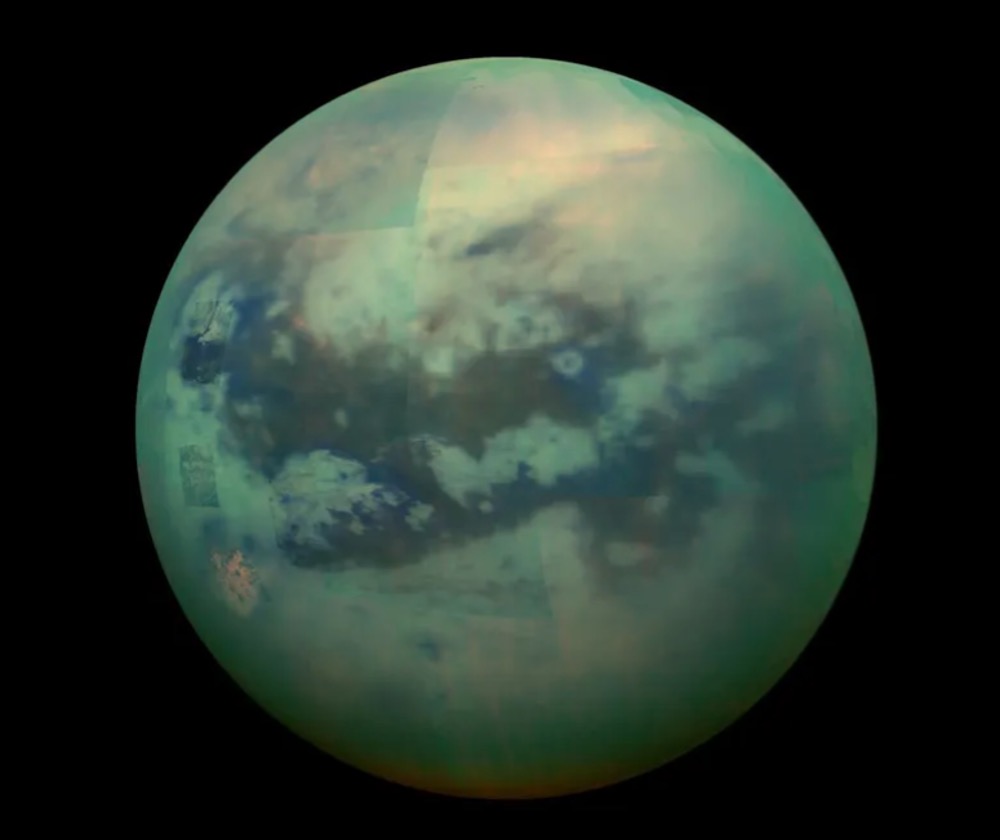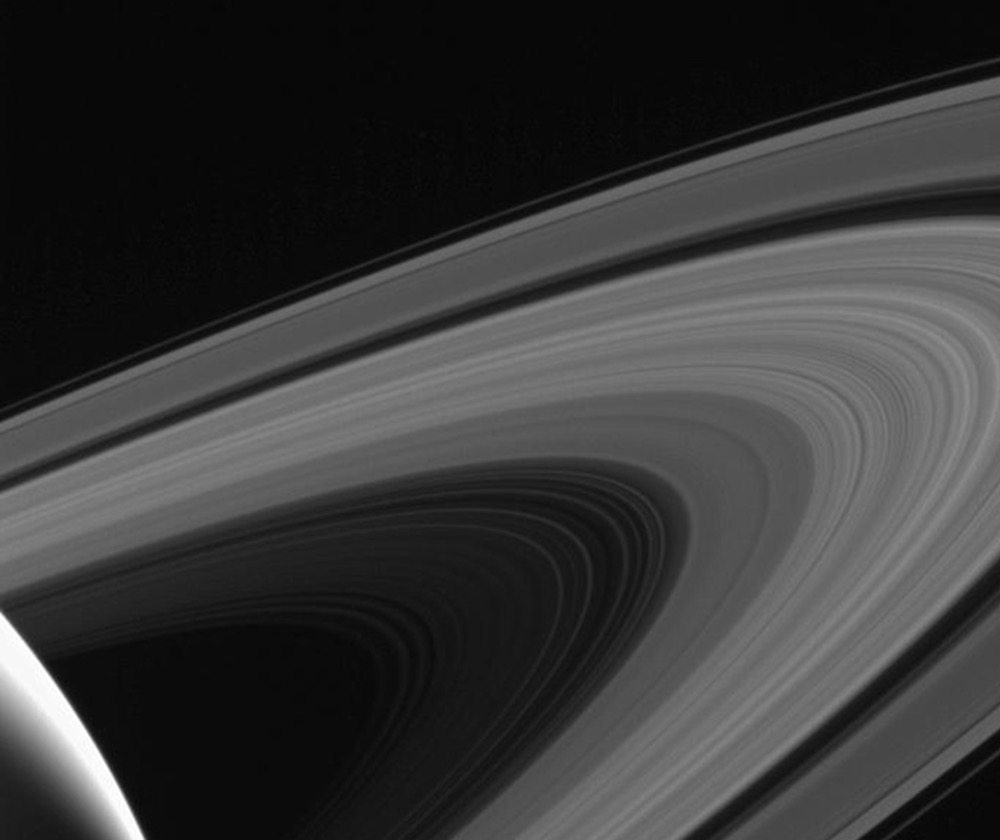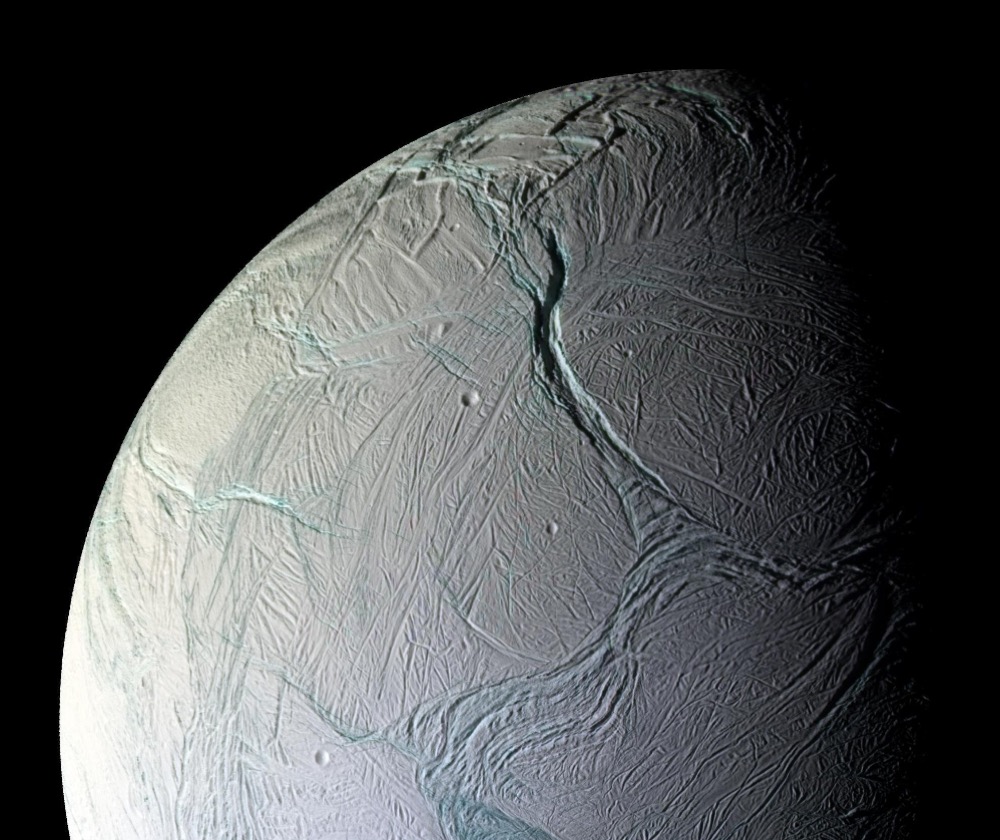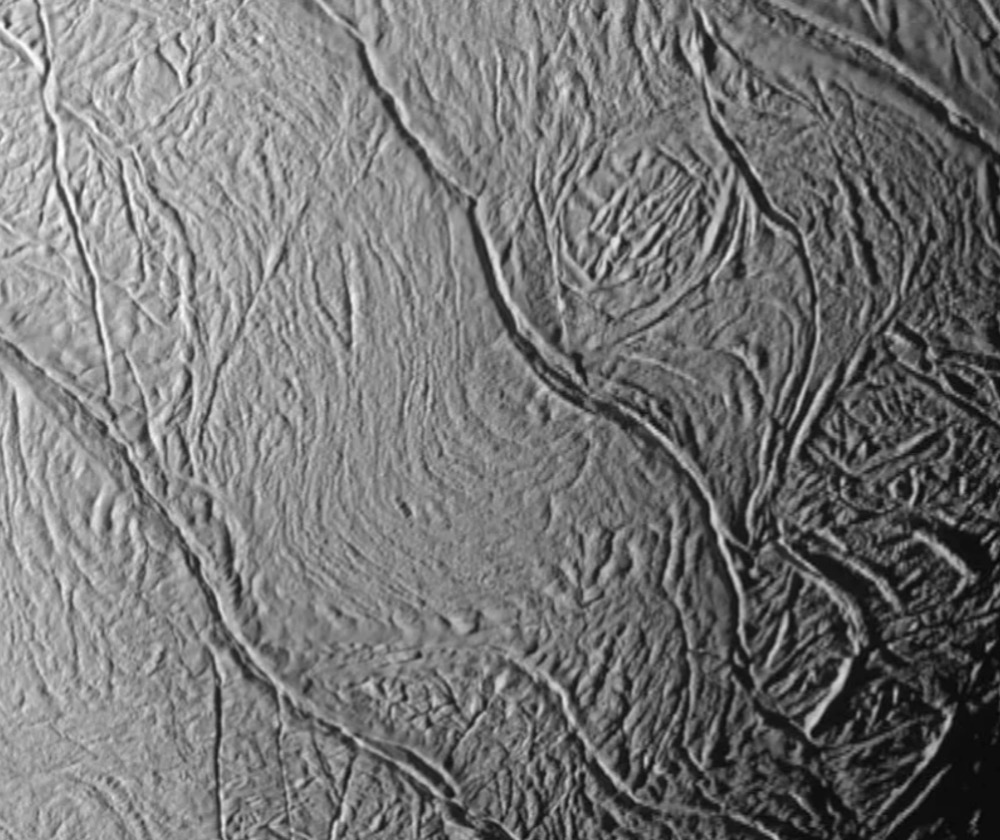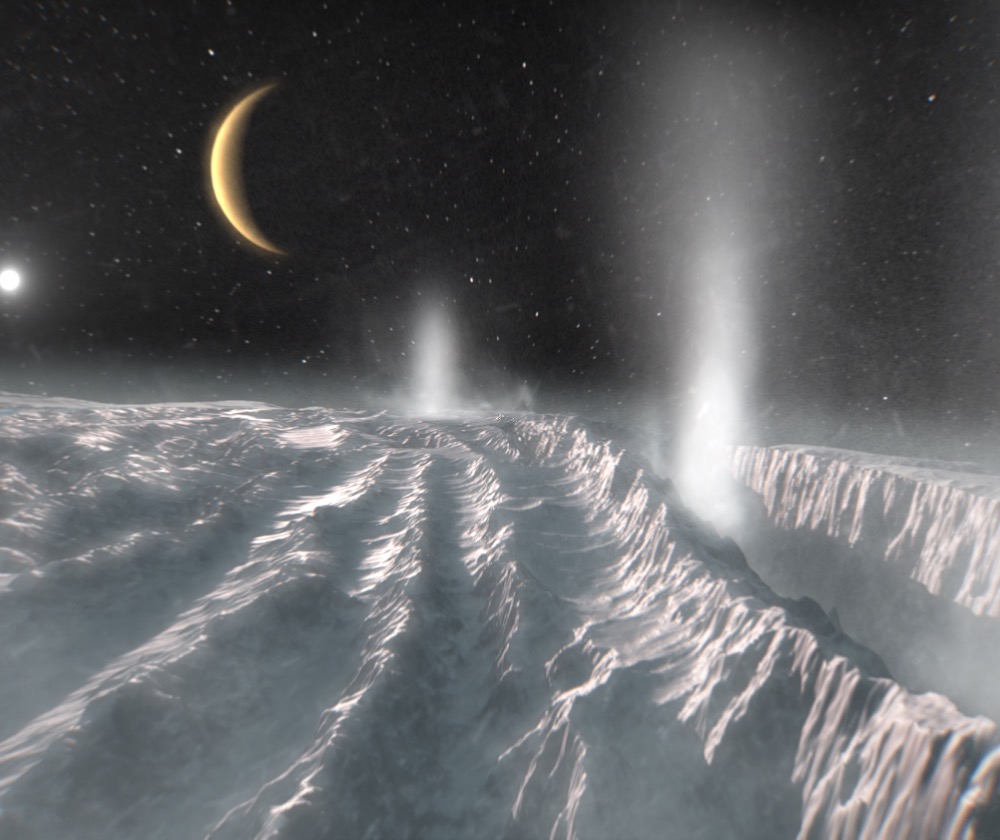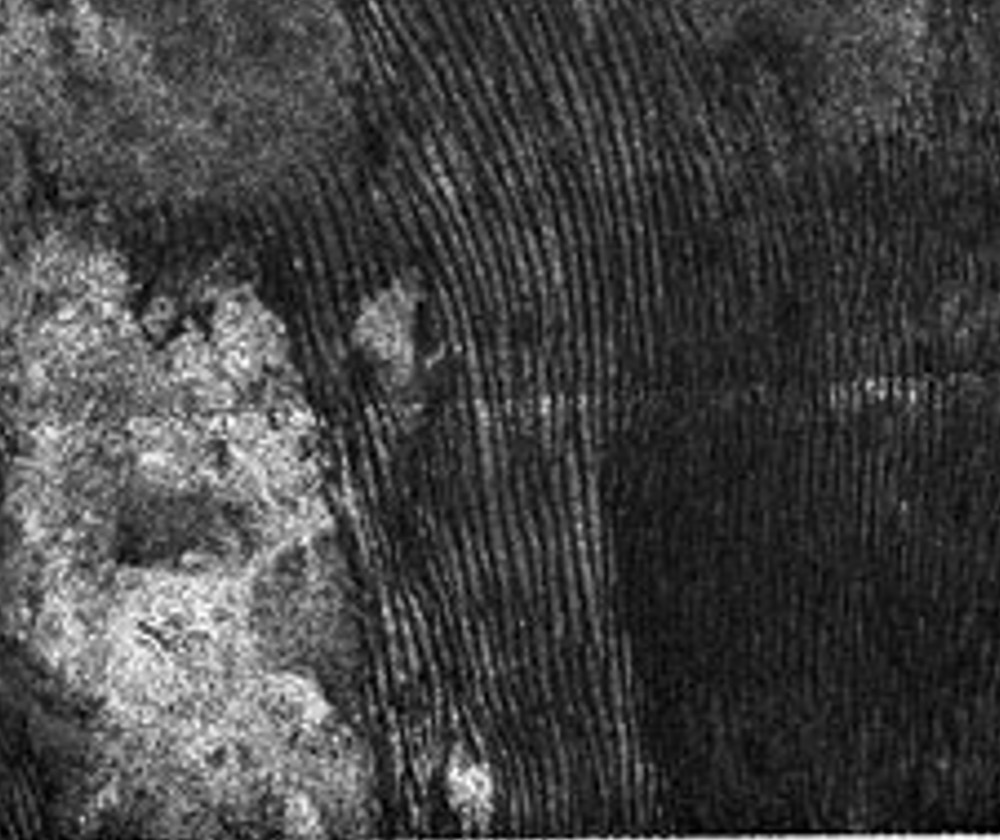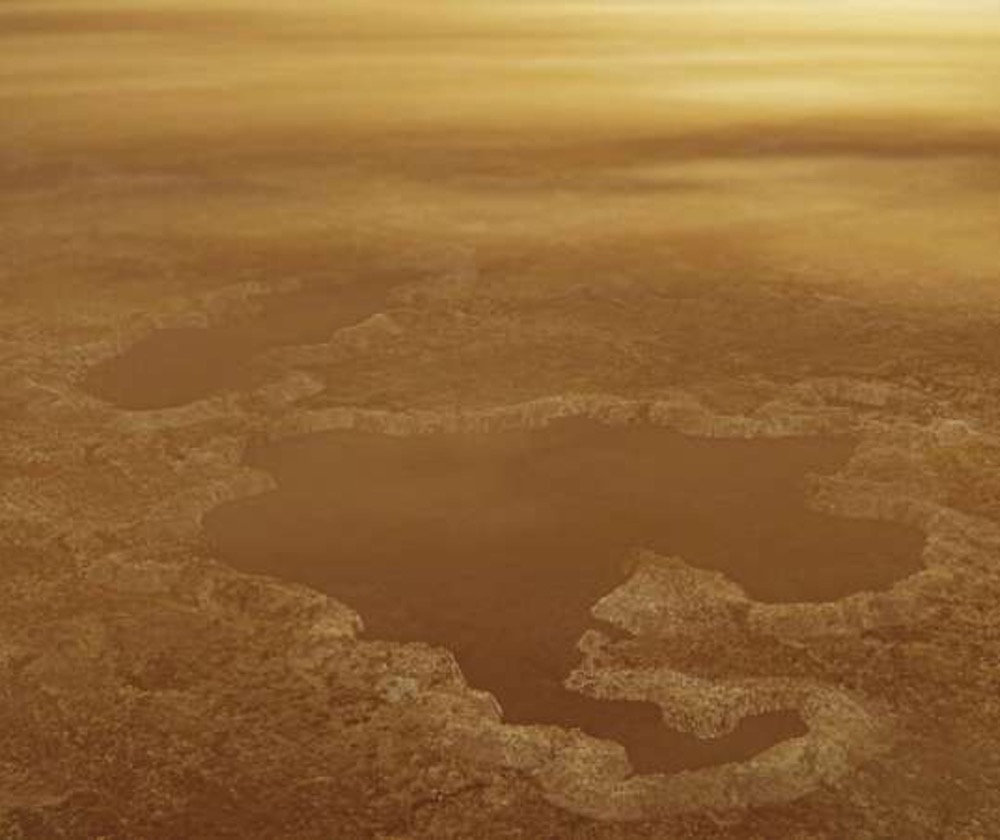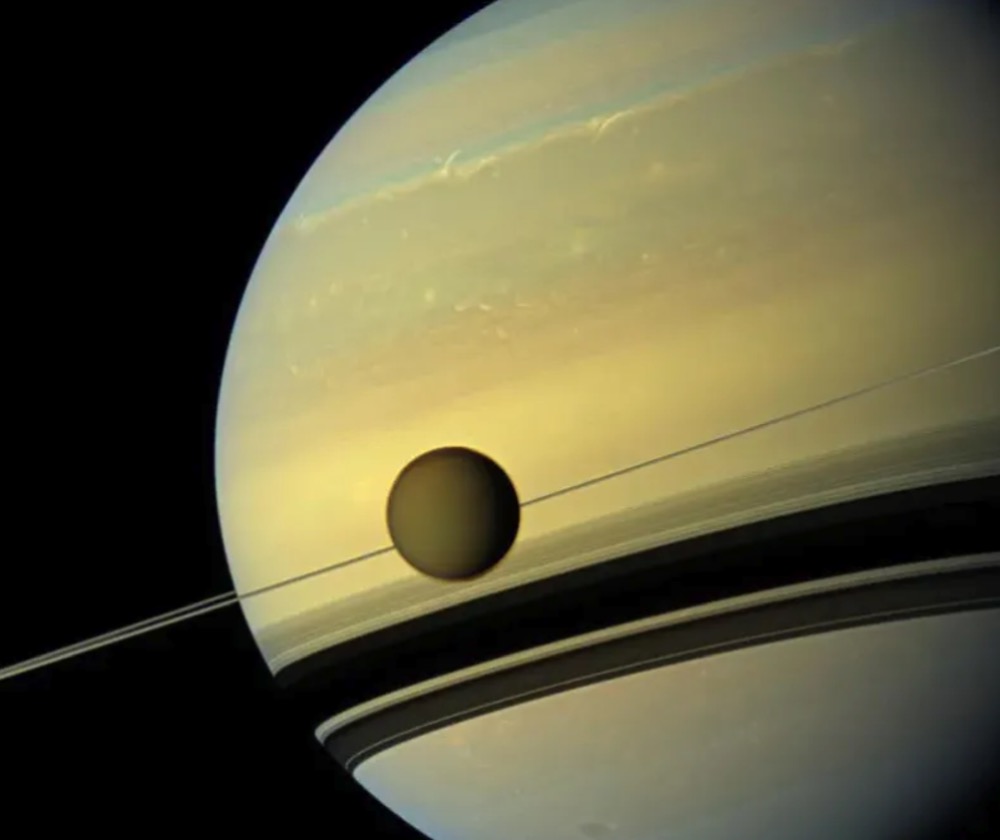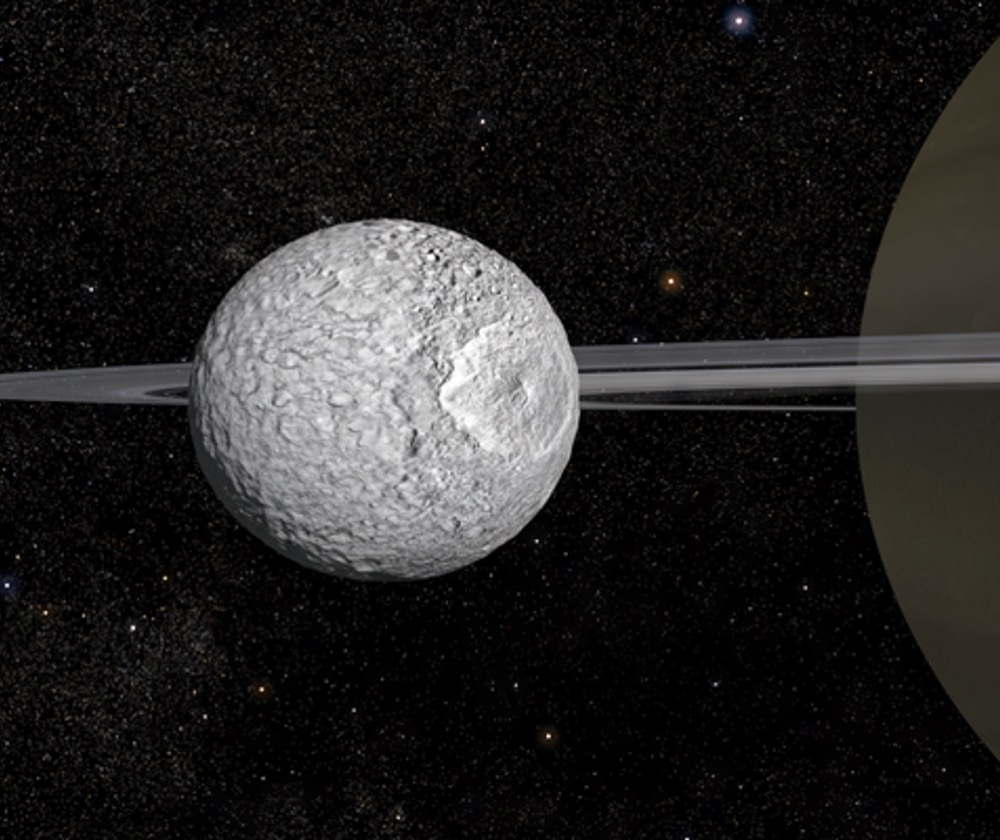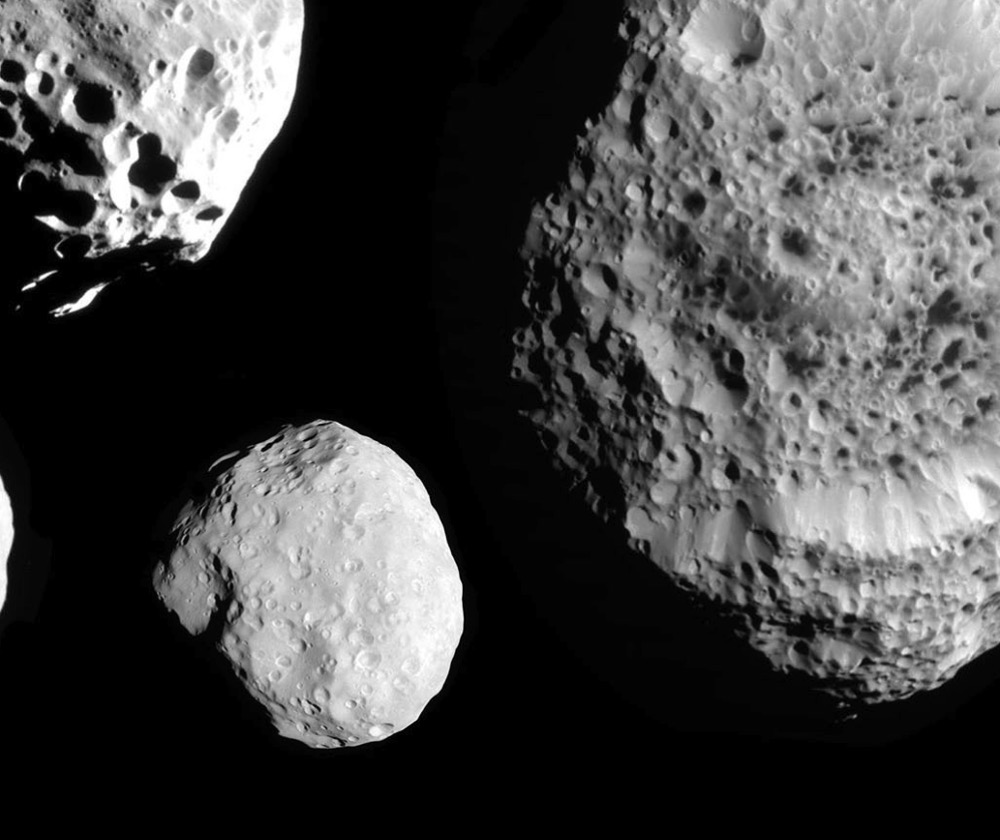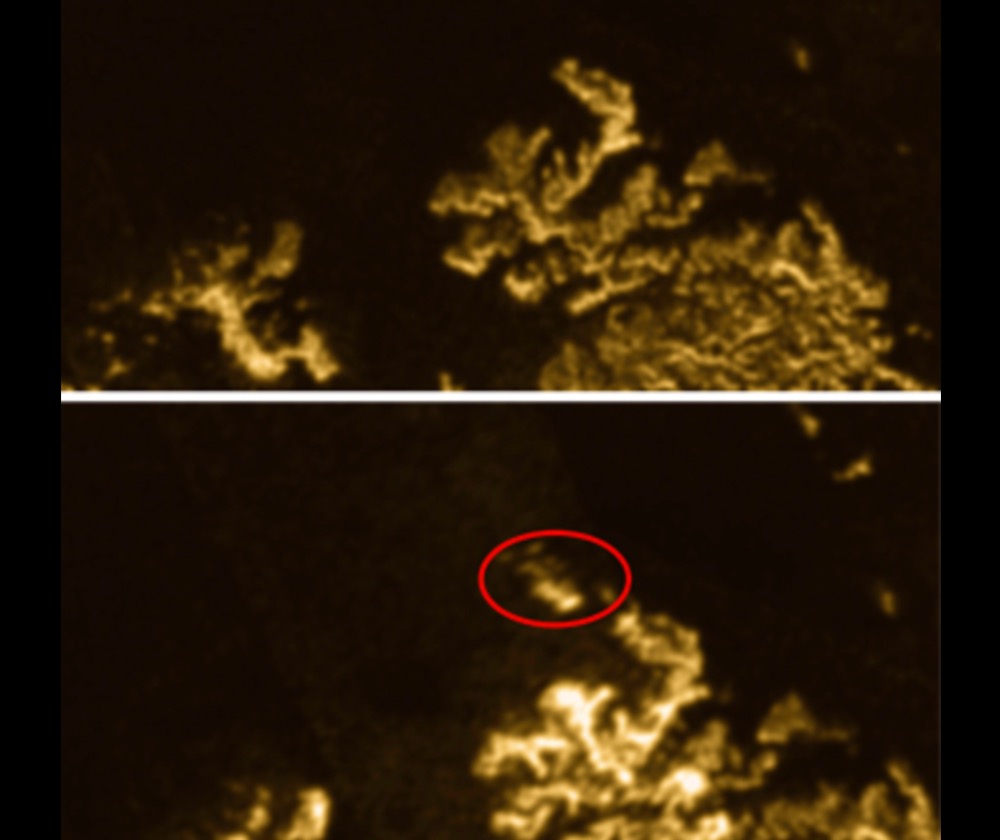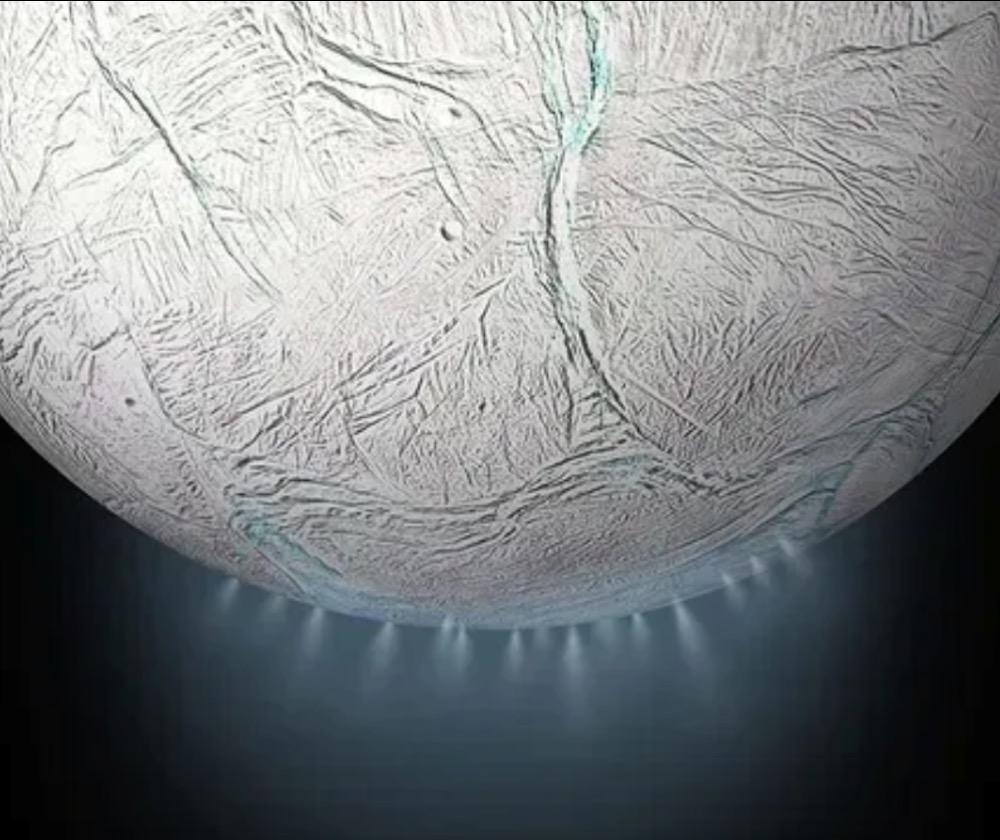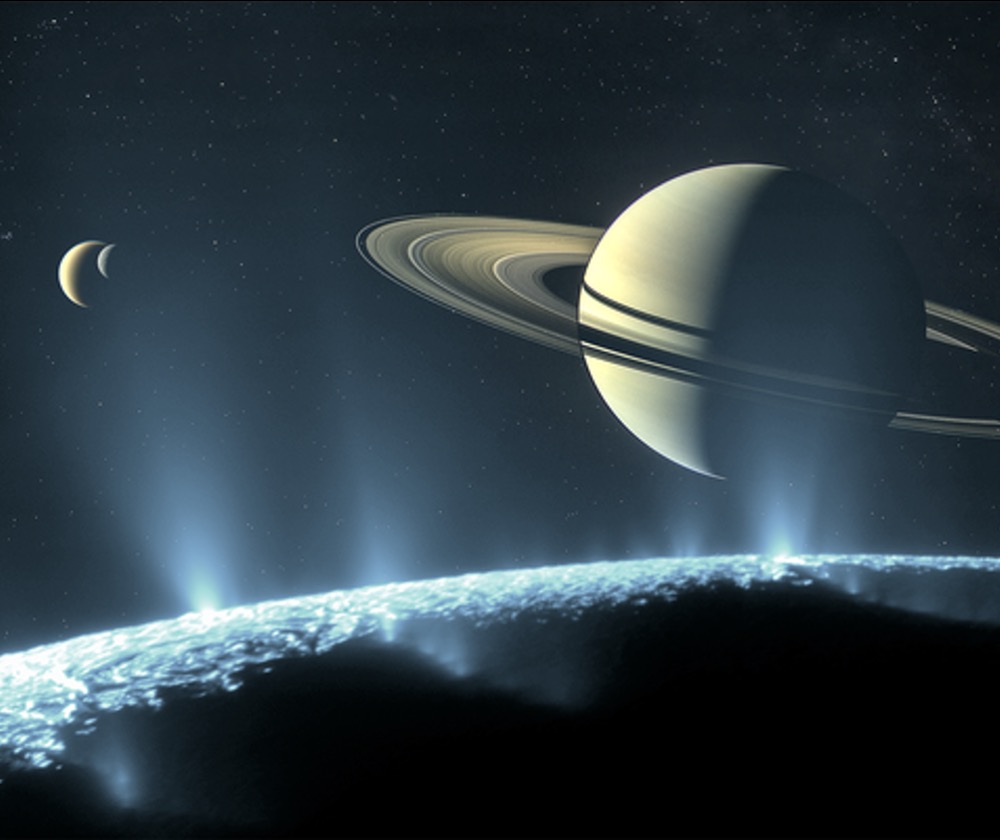How Is Titan Like Earth?
Titan it the only moon in the Solar System with a significant atmosphere. Like Earth, it’s mostly nitrogen and has rain clouds. The similarities don’t end there. Titan has deserts covered in dunes, canyons carved by rivers, vast flood plains, lakes and seas. It’s the only other world in the Solar System with liquid on its surface. But that’s where the similarities end. The air is four times as dense as Earth’s, producing a surface pressure equivalent to being 4.5 m (15 ft) underwater. Titan’s surface is made of ice so cold that it behaves like rock does here on Earth. As for those rivers and lakes, the frigid temperature and higher pressure are perfect for methane gas in the atmosphere to condense into a liquid, rain down, and flow on the surface, behaving like water does here on Earth. One might wonder, could there be life there that’s based on liquid methane, the same way Earth’s life is based on liquid water? Read More
Latest News About Saturn's Moons
Enceladus

One of Saturn’s medium-sized moons, Enceladus, has a confirmed ocean under its icy shell, similar to Jupiter’s moon Europa. This was discovered when jets were observed by the Cassini spacecraft erupting from cracks in the surface around the moon’s south pole. Direct measurements of the material in the jets by the spacecraft's instruments revealed it is mostly water ice particles that also contain traces of carbon dioxide, methane, salts, and silicates, as well as simple and complex organic compounds. Most of these particles fall back to the surface as snow, creating the most reflective surface in the solar system, while the rest spreads into space and creates Saturn’s E ring. The discovery of this ocean was a surprise because Enceladus’ mass is over 400 times smaller than Europa’s, and so it was thought too small for internal temperatures to be high enough to melt the bottom layer of its icy crust. The mysterious source of this internal heat was found to be gravitational interactions with another, larger moon, Dione, in additional to the tidal forces from Saturn. The presence of silica in the water indicates that, like Europa, the ocean has a rocky bottom with water temperatures there of at least 90°C (194°F). This hydrothermal energy has the potential to support life and all measurements thus far point to similarities with regions of Earth’s ocean floor where ecosystems are supported by chemosynthesis instead of photosynthesis, making Enceladus another prime target in the search for extraterrestrial life.
Titan

Saturn’s largest moon and the second largest moon in the Solar System, Titan is the only moon in our system with a dense atmosphere composed mostly of nitrogen and small quantities of methane and other carbon-rich compounds. Titan is also the only body in the Solar System apart from Earth with standing bodies of liquid on the surface and a cycle of liquid raining from clouds, flowing across the surface, collecting in lakes and seas, and then evaporating back into the air (similar to Earth’s water cycle). However, with the surface temperature averaging -179°C (-290°F) on Titan, the solid surface is water ice and the liquid is methane, possibly with some ethane and nitrogen mixed in. The result is a world with geologic features quite similar to Earth, only with water ice behaving like rock does on Earth and methane behaving like liquid water does on Earth. The Cassini spacecraft also found evidence that Titan has an subsurface ocean of liquid water. Researchers have found evidence for cryovolcanoes on Titan – icy domes that spew liquid water instead of lava, possibly releasing methane into the atmosphere at the same time. There are also equatorial dune fields on the moon, though the sand is not made of silicates like on Earth, but rather water ice grains coated with orange-colored hydrocarbon “snow” that falls from the sky. These hydrocarbons are also responsible for the orange haze high in Titan’s atmosphere that hides its surface from view, at least in visible light. Using infrared light and radar, Cassini was able to peer through the haze to observe clouds in the lower atmosphere and features on the surface.
Medium-Sized Moons

Saturn hosts a group of six moons that are much smaller than Titan and Jupiter’s Galilean Satellites, but large enough to be round, unlike the dozens of other small, irregularly-shaped moons. In order from closest to farthest from Saturn they are: Mimas, Enceladus, Tethys, Dione, Rhea, and Iapetus. Mimas and Enceladus are the smallest, and Rhea and Iapetus are the largest. All of them have surfaces composed mostly of water ice and likely have rocky cores. While it is possible that some of these moons have subsurface oceans like Enceladus, none have yet been detected. Most of them have surfaces more cratered than Enceladus’, indicating less geologic activity, but some also have cracks and ridges on their surfaces, showing that they are not completely inactive. Mimas’ large, prominent crater has led to it being nicknamed the “Death Star Moon,” and Iapetus’ dramatic two-toned surface is thought to be the result of it orbiting through dark debris blasted off of a nearby smaller moon, Phoebe.
Small Moons

With the recent discovery of 62 new small moons, Saturn’s known moons now number 146, reclaiming its title of "Moon King" from Jupiter, whose current count is 95. Like Jupiter’s small moons, they are irregularly-shaped and several times smaller than the medium-sized moons of Saturn. Their composition is a mixture of water ice and rocky dust. The moons Prometheus, Daphnis, Pan, Janus, and Epimetheus all orbit close to or within the ring system and are known as “shepherd moons” because they clear out gaps in the rings and keep the edges well defined. They also create ripples in the ring material with their gravitational pull, which then propagate through the rings giving them their vinyl record appearance. Another moon, Hyperion, is so heavily cratered that it resembles a sponge, and its orbit is chaotic making it difficult to predict its exact position far into the future. The moon Phoebe, thought to be responsible for darkening one side of the medium-sized moon Iapetus with its dust, has water ice that is chemically different from all other water yet studied in the Solar System, having a much higher amount of “heavy water,” which contains deuterium instead of typical hydrogen. This could indicate that Phoebe formed much farther out in the Solar System and then migrated to Saturn where it was captured as a moon.
Rings

Saturn’s rings are made of a countless number of small particles which range in size from dust grains to semi-trucks. The particles in the rings are mainly water ice with a trace of rocky material. While the gravitational pull of passing moons can cause waves in the ring material up to 1 km high, the rings are typically only 10 m thick, about the height of a 3-story building. This is incredibly thin considering that the main ring system is almost as wide as the distance from the Earth to the Moon! If you shrunk the ring system down to the length of a football field, it would be only as thick as one-third the width of the finest human hair. Recent data returned by the Cassini spacecraft before it finished its 13-year mission at Saturn suggest that the rings are relatively new, possibly forming around the time that dinosaurs started dominating the Earth. Furthermore, they will not last forever and maybe nearly gone within a few hundred million years, a short length of time for a planet that is 4.6 billion years old.
